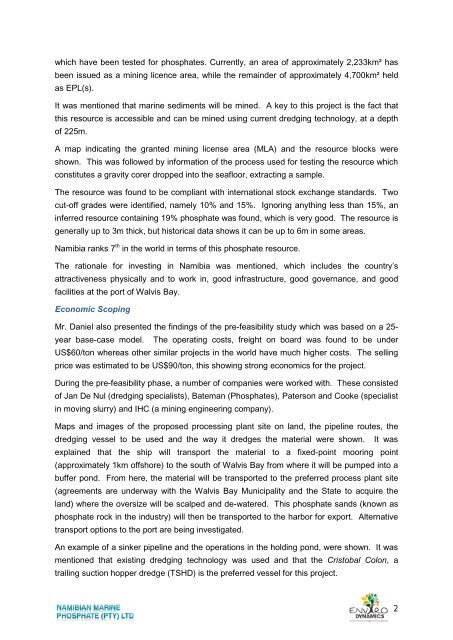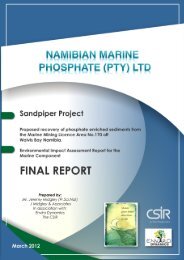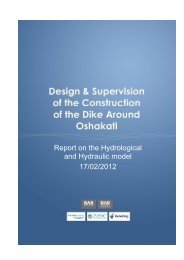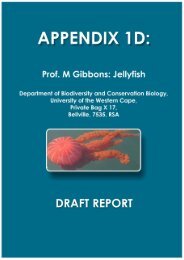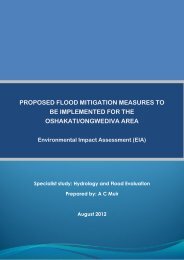2-App-NMP minutes-2-Authorities-WHK - Enviro Dynamics Namibia
2-App-NMP minutes-2-Authorities-WHK - Enviro Dynamics Namibia
2-App-NMP minutes-2-Authorities-WHK - Enviro Dynamics Namibia
You also want an ePaper? Increase the reach of your titles
YUMPU automatically turns print PDFs into web optimized ePapers that Google loves.
which have been tested for phosphates. Currently, an area of approximately 2,233km² has<br />
been issued as a mining licence area, while the remainder of approximately 4,700km² held<br />
as EPL(s).<br />
It was mentioned that marine sediments will be mined. A key to this project is the fact that<br />
this resource is accessible and can be mined using current dredging technology, at a depth<br />
of 225m.<br />
A map indicating the granted mining license area (MLA) and the resource blocks were<br />
shown. This was followed by information of the process used for testing the resource which<br />
constitutes a gravity corer dropped into the seafloor, extracting a sample.<br />
The resource was found to be compliant with international stock exchange standards. Two<br />
cut-off grades were identified, namely 10% and 15%. Ignoring anything less than 15%, an<br />
inferred resource containing 19% phosphate was found, which is very good. The resource is<br />
generally up to 3m thick, but historical data shows it can be up to 6m in some areas.<br />
<strong>Namibia</strong> ranks 7 th in the world in terms of this phosphate resource.<br />
The rationale for investing in <strong>Namibia</strong> was mentioned, which includes the country’s<br />
attractiveness physically and to work in, good infrastructure, good governance, and good<br />
facilities at the port of Walvis Bay.<br />
Economic Scoping<br />
Mr. Daniel also presented the findings of the pre-feasibility study which was based on a 25-<br />
year base-case model. The operating costs, freight on board was found to be under<br />
US$60/ton whereas other similar projects in the world have much higher costs. The selling<br />
price was estimated to be US$90/ton, this showing strong economics for the project.<br />
During the pre-feasibility phase, a number of companies were worked with. These consisted<br />
of Jan De Nul (dredging specialists), Bateman (Phosphates), Paterson and Cooke (specialist<br />
in moving slurry) and IHC (a mining engineering company).<br />
Maps and images of the proposed processing plant site on land, the pipeline routes, the<br />
dredging vessel to be used and the way it dredges the material were shown. It was<br />
explained that the ship will transport the material to a fixed-point mooring point<br />
(approximately 1km offshore) to the south of Walvis Bay from where it will be pumped into a<br />
buffer pond. From here, the material will be transported to the preferred process plant site<br />
(agreements are underway with the Walvis Bay Municipality and the State to acquire the<br />
land) where the oversize will be scalped and de-watered. This phosphate sands (known as<br />
phosphate rock in the industry) will then be transported to the harbor for export. Alternative<br />
transport options to the port are being investigated.<br />
An example of a sinker pipeline and the operations in the holding pond, were shown. It was<br />
mentioned that existing dredging technology was used and that the Cristobal Colon, a<br />
trailing suction hopper dredge (TSHD) is the preferred vessel for this project.<br />
2


